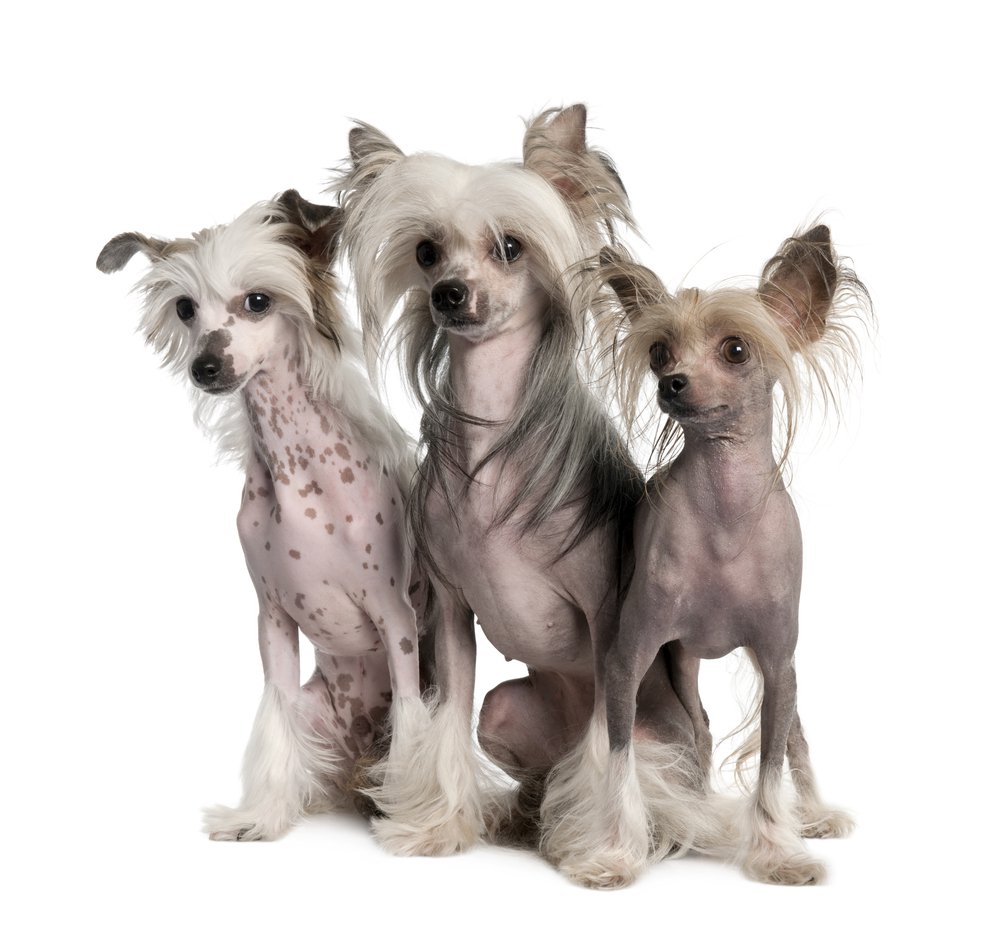
The Breed History
In Ancient times, it has been reported that the African hairless dog
was taken to China where further breeding reduced the emerging
breed to a toy size. Others place hairless South American dogs as
distant relatives. First breed records date to the late 1800s. The
Chinese crested dogs were left at ports of call around the world when
sailors, who used the dogs onboard to control vermin, traded them
with local merchants. In Mexico, they may have contributed to the
development of the Chihuahua. First AKC registry occurred in 1991.
Breeding for Function
Historically, they were ratters, mousers, and companion dogs.
Physical Characteristics
Height at Withers: 11-13" (28-33 cm)
Weight: 5-12 lb (2-5.5 kg)
Coat: Two coat types exist: Hairless and Powderpuff. Hairless have
no body hair. It is present only on the extremities and the head hair
is called the crest. From the metacarpals and going distally, and
from the tarsus distally they have socks of hair. The tail has a plume
of hair as well. In all dogs the hair is silky, but the Powderpuff has a
double coat. Any color is accepted, as is any color combination.
Powderpuff is a full-coated variety. Mixed haircoat litters are born
to Powderpuff X hairless and hairless X hairless crosses. These two
varieties are generally crossed because the hairless dogs are not
as vigorous (breeding, integument, missing teeth). The hairless
type is AD, and homozygotes are not viable, so hairless dogs are
heterozygotes.
Longevity: 12-13 years.
Points of Conformation: A fine-boned toy dog with almost square
proportions. Eyes are wide set and nose and eyes are colored to
match the coat, and almond shaped. Erect ears are large, the skull
is wedge shaped, the stop distinct, and the muzzle tapers. In the
hairless variety, missing teeth are not faulted but in Powderpuff they
are. The slightly arched neck provides for high head carriage. The
topline is level though the croup slopes down slightly. The thorax
is moderately shallow and there is a moderate abdominal tuck. The
tapered tail reaches the tarsus at rest, and is slender with a curve
at the tip. In action the tail is held high or even over the back.
Dewclaws may be removed. The finely boned limbs are straight, the
feet are elongated with a "hare" conformation. The gait is quick and
agile, but smooth. Skin may have a mottled pigmentation.
Recognized Behavior Issues and Traits
Reported attributes of the breed include: Playful, good for city and
apartment living, low grooming needs but high bathing needs,
lively, affectionate, does not tolerate temperature extremes well,
especially cold.
These dogs are very prone to sunburn and papules. They are low
shedders, have a low barking tendency, and need close human
companionship.
Normal Physiologic Variations
Hairlessness is caused by a dominant gene that is lethal in utero in
the homozygous state. This gene also produces variably expressed
missing premolars in the heterozygous state. Because of the lethal
homozygous state, breeding two heterozygous hairless dogs
together produces a 2:1 ratio of hairless to (homozygous normal)
powderpuff dogs. Breeding hairless to powderpuff dogs, produces a
1:1 ratio of hairless to powderpuff offspring.
Chinese crested dogs are very sensitive to heat and cold. The skin
is thin, and prone to lacerations and dryness. They sweat through
their skin so they do not pant as much as other breeds.
Drug Sensitivities
None reported
Inherited Diseases
Incomplete Dentition: It is common to have variable expression of
missing premolars with the autosomal dominant hairless phenotype.
Patella Luxation: Polygenically inherited laxity of patellar ligaments,
causing luxation, lameness, and later degenerative joint disease.
Treat surgically if causing clinical signs. OFA reports 4.5% affected.
Primary Lens Luxation (PLL) and Secondary Glaucoma:
An autosomal recessive gene causes primary lens luxation.
Homozygous affected dogs usually develop lens luxation between
4-8 years of age. Rarely, heterozygous carriers can develop lens
luxation, but at a later age. Lens luxation can lead to secondary
glaucoma and blindness. A genetic mutation has been identified,
and a genetic test is available. OFA testing shows 27% carrier, and
2% affected.
Progressive Retinal Atrophy (PRA): More than one form of
PRA occurs in the breed. The autosomal recessive prcd form (age
of onset between 3-8 years) occurs, and a genetic test exists but
prcd-PRA does NOT appear to be the predominant PRA disease type.
0.56% of Chinese Crested
Dogs CERF examined by veterinary ophthalmologists between
2000-2005 are identified as affected, and 1.55% as suspicious for
PRA. CERF does not recommend breeding Chinese Crested Dogs
affected with PRA.
Hip Dysplasia and Legg-Calve Perthes Disease: Polygenically
inherited traits causing degenerative hip joint disease and arthritis.
Too few Chinese Crested Dogs have been screened by OFA to
determine an accurate frequency.
Elbow Dysplasia: Polygenically inherited trait causing elbow
arthritis. Too few Chinese Crested Dogs have been screened by OFA
to determine an accurate frequency.
Canine Multiple System Degeneration (CMSD): This rare,
autosomal recessive disorder causes progressive cerebellar
ataxia, with its onset between nine and sixteen weeks of age.
Histopathology shows loss of Purkinje's cells, then bilateral
symmetric degeneration of the olivary nuclei, followed by
degeneration of the substantia nigra and caudate nucleus. Affected
dogs do not survive beyond 5-6 months of age.
Disease Predispositions
Vitreous Degeneration: Liquefaction of the vitreous gel
which may predispose to retinal detachment and blindness.
Vitreous Degeneration is reported in 7.69% of Chinese crested
dogs CERF-examined by veterinary ophthalmologists between
2000-2005.
Hypothyroidism: Inherited autoimmune thyroiditis. 7.4% positive
for thyroid auto-antibodies based on testing at Michigan State
University. (Ave. for all breeds is 7.5%).
Sunburn: Chinese crested dogs are very sensitive to sunlight
(ultraviolet radiation). Sun block should be used when exposed to
direct sunlight.
Cataracts: Anterior and posterior cortex intermediate cataracts
predominate in the breed, although nuclear and capsular cataracts
also occur. Reported in 5.92% of Chinese Cresteds presented to
veterinary teaching hospitals. Identified in 2.02% of Chinese Crested
Dogs CERF examined by veterinary ophthalmologists between
2000-2005. CERF does not recommend breeding any Chinese
Crested Dogs with a cataract.
Persistent Pupillary Membranes: Strands of fetal remnant
connecting; iris to iris, cornea, lens, or involving sheets of tissue. The
later three forms can impair vision, and dogs affected with these
forms should not be bred. Identified in 1.85% of Chinese Crested Dogs
CERF examined by veterinary ophthalmologists between 2000-2005.
Comedomes (Blackheads): The skin of Chinese crested dogs
are prone to spontaneous comedome formation throughout the
dorsal skin, on the limbs and prepuce. Plugged follicles containing
abundant sebum and keratic substances resembles human acne.
Deafness: Unilateral or bilateral congenital deafness is reported by
Strain. Diagnosed by BAER testing.
Brachygnathism and Prognathism are reported.
Isolated Case Studies
None reported
Genetic Tests
Tests of Genotype: Direct test for prcd-PRA test is available from
Optigen.
Direct test for PLL is available from the OFA and the Animal Health
Trust.
Tests of Phenotype: CHIC Certification: Required testing includes
CERF eye examination (annually), patella evaluation (at a minimum of
1 year of age), and a congenital cardiac evaluation. Optional testing
includes genetic tests for PLL and prcd-PRA, BAER hearing test, and
hip radiographs.
Recommend elbow radiographs and thyroid profile including
autoantibodies.
Miscellaneous
- Breed name synonyms: Crested, Crestie, Powderpuff, Chinese
Edible dog (historical), Chinese Hairless, Chinese Royal Hairless,
Chinese Ship Dog (historical), South African Hairless (historical in
Africa), Pyramid or Giza Hairless (historical name in Egypt)
- Registries: AKC, UKC, CKC, KCGB (Kennel Club of Great Britain),
ANKC (Australian National Kennel Club), NKC (National Kennel Club)
- AKC rank (year 2008): 54 (2,098 dogs registered)
- Internet resources: American Chinese Crested Club Inc.:
www.accc.chinesecrestedclub.info/
Chinese Crested Club of Great Britain:
www.thechinesecrestedclubofgb.co.uk
Chinese Crested Club of Canada:
www.chinesecrestedclubcanada.com
Photo Gallery of Breed - Chinese Crested - Dog Breed
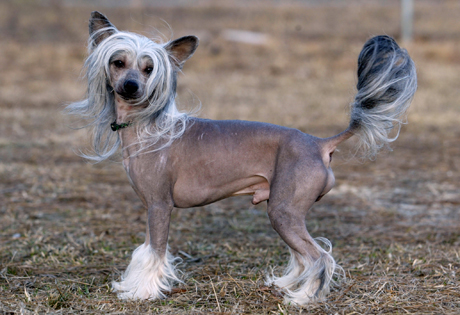
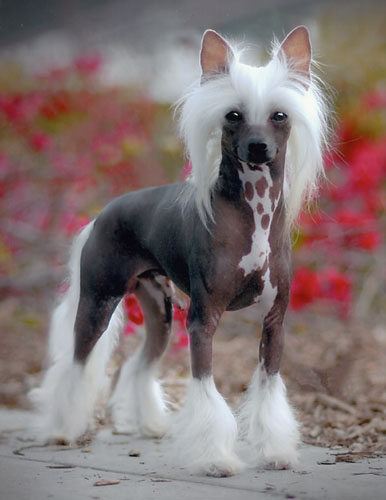
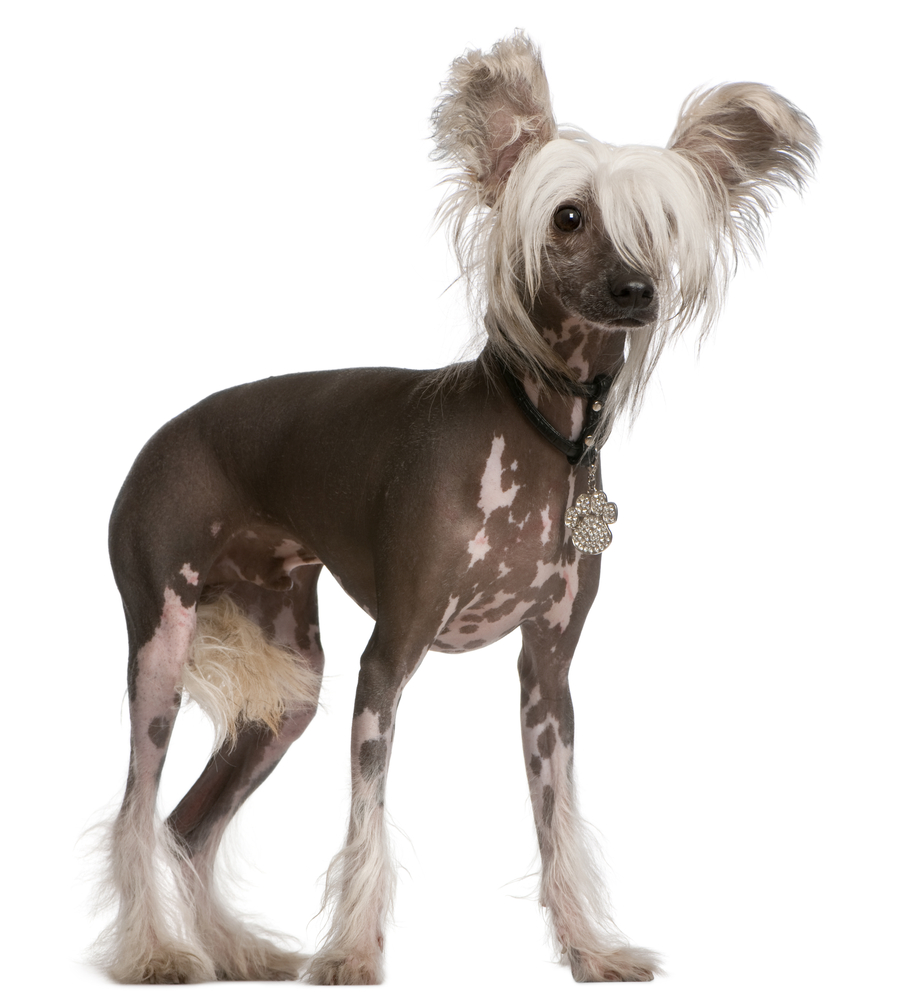
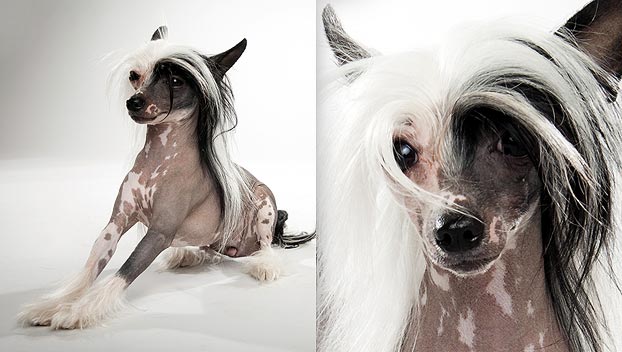


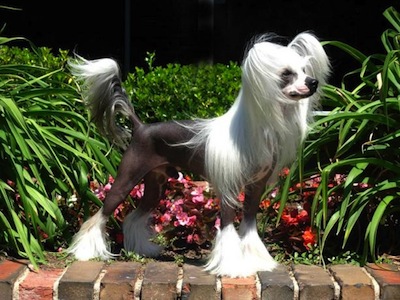
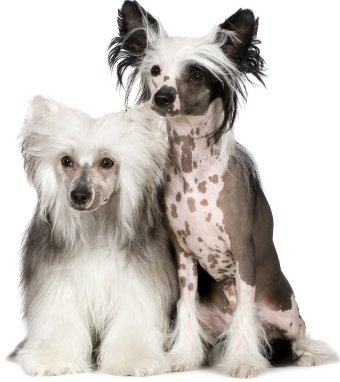
 Animalia Life
Animalia Life